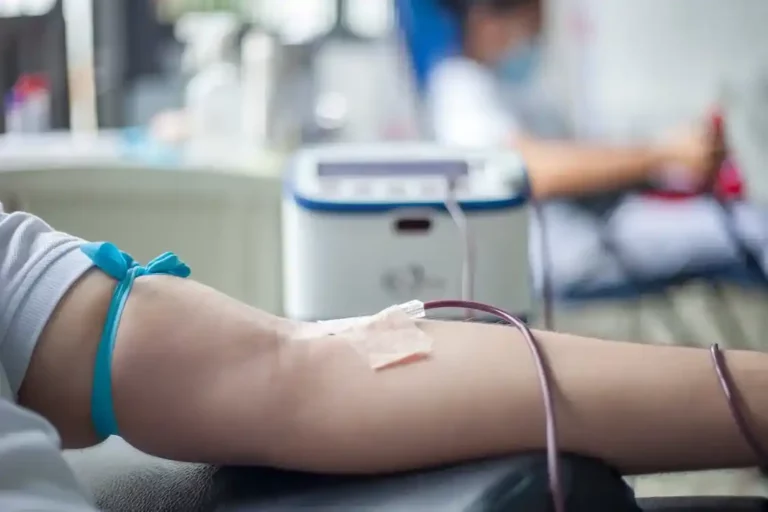 As we commemorate World Blood Donor Day on June 14th annually, blood transfusion plays a crucial role in healthcare.
As we commemorate World Blood Donor Day on June 14th annually, blood transfusion plays a crucial role in healthcare.
It saves millions of lives each year, both in routine and emergency situations, enabling complex medical interventions and significantly improving the life expectancy and quality of life for patients with various acute and chronic conditions.
Patients who require transfusions as part of their clinical care have the right to expect a sufficient and safe blood supply to meet their needs. Unfortunately, many patients still suffer or die unnecessarily due to limited access to safe blood transfusions.
The availability of safe blood and blood products is vital in all healthcare facilities where transfusions are performed. However, in many developing and transitional countries, there is a significant gap between the demand for blood and the available supply.
The advancements in medical treatments for serious illnesses and injuries have increased the need for blood transfusions to ensure patient survival, aid in recovery, and maintain overall health. Surgeries, trauma cases, and cancer treatments, which often require blood transfusions, are now leading causes of death, surpassing communicable diseases. Every year, approximately 234 million major operations, 63 million trauma surgeries, 31 million cancer treatments, and 10 million pregnancy-related procedures necessitate blood transfusions.
In countries with limited diagnostic and treatment resources, most transfusions are given to treat pregnancy and childbirth complications, severe childhood anaemia, trauma cases, and congenital blood disorders.
Haemorrhage, for instance, accounts for over 25% of the 530,000 maternal deaths each year, with 99% of these occurring in developing nations. Access to safe blood could potentially prevent a quarter of maternal deaths annually. Blood transfusion has been identified as one of the essential life-saving functions that should be available in first-referral level healthcare facilities providing comprehensive emergency obstetric and newborn care.
Children, especially those living in malaria-endemic areas, are particularly vulnerable to blood shortages due to severe life-threatening anaemia resulting from malaria, often aggravated by malnutrition. The highest burden of malaria is found in the WHO African region, with the majority of cases affecting children under the age of five.
Road traffic accidents claim the lives of 1.2 million people each year, while 20 million to 50 million more individuals are injured or disabled, with a large portion requiring transfusions within the first 24 hours of treatment. Approximately 90% of these deaths occur in developing and transitional countries. Timely access to blood in emergency healthcare facilities is crucial for patient survival.
Ensuring the sufficiency and security of national blood supplies presents a dual challenge for blood transfusion services. They must maintain an adequate supply while ensuring the quality and safety of blood and blood products for patients who depend on transfusions.
Blood supplies must be continuously replenished since whole blood and blood components have a limited shelf-life. Many countries struggle to meet current demands while simultaneously facing increasing clinical needs for blood.
The timely availability of blood at emergency healthcare facilities is one of the determinants of patient survival.
Sufficiency and security of national blood supplies
Blood transfusion services face a dual challenge of ensuring both a sufficient supply and the quality and safety of blood and blood products for patients whose lives or well-being depend on blood transfusion.
Blood supplies need to be constantly replenished since whole blood and blood components have a limited shelf-life. Most countries battle to meet current requirements while at the same time responding to increasing clinical demands for blood.
For example, in the WHO African region, blood requirements were estimated at 8 million units in 2006, but only 3.2 million units were collected, meeting approximately 41.5% of the demand.
Most countries, Kenya included, with low rates of blood donation are largely dependent on blood provided by the families or friends of patients who require transfusions.
Paradoxically, despite a markedly inadequate blood supply in many countries, unnecessary transfusions are often given when the availability and use of simpler, less expensive treatments would provide equal or greater benefit.
Not only does this expose patients needlessly to the risk of potentially fatal transfusion reactions, but it also widens the gap between supply and demand and contributes to shortages of blood and blood products for patients who need them.
Why voluntary blood donation?
Blood and blood products are a unique and precious national resource because they are obtainable only from individuals who donate blood or its components. Most countries urgently need a substantial increase in the number of people who are willing and eligible to donate blood to ensure a stable supply of safe blood and blood products that is sufficient to meet national requirements.
WHO, the IFRC, the Council of Europe, the International Society of Blood Transfusion, the International Federation of Blood Donor Organizations and several other international and national organizations have defined voluntary, non-remunerated blood donation as a founding and guiding principle.
They recommend that all blood donations should be voluntary and non-remunerated and that no coercion should be brought to bear upon the donor to donate.
A voluntary, non-remunerated blood donor gives blood, plasma, or cellular components of his or her own free will and receives no payment, either in the form of cash or in-kind which could be considered a substitute for money. This would include time off work other than that needed for the donation and travel. Small tokens, refreshments, and reimbursements of direct travel costs are compatible with voluntary, non-remunerated donations.
In systems based on voluntary blood donation, patients have improved access to safe blood transfusions in routine and emergencies, without which their survival or quality of life might be threatened. The blood and blood products they receive carry a minimal risk of infection that might further compromise their health.
They are not placed under pressure to find blood donors to receive treatment and feel a sense of being cared for by others whom they will never meet. In turn, this may motivate a spirit of generosity and a desire for reciprocal volunteering in the future.
Family/replacement donors cannot meet a community’s requirements for blood and blood products because they provide blood only for individual patients when requested.
The blood given to patients will not necessarily be replaced by blood group or quantity. Hospitals that are dependent on replacement donors are rarely able to maintain a sufficient stock of blood to meet the transfusion needs of all their patients, particularly in emergencies or for regular transfusions, or to share their blood supplies with other hospitals.
Paying people to give blood undermines the principle of voluntary non-remunerated blood donation. Where systems of paid and voluntary blood donation co-exist, people who might otherwise donate voluntarily may opt to receive payment for their blood, thus weakening the voluntary blood donor programmes.
Voluntary blood donation and the safety of blood and blood products
Voluntary blood donors, particularly regular donors, are the first line of defence in preventing the transmission of HIV, hepatitis viruses and other bloodborne infections through the route of transfusion. Several studies have reported a significantly lower prevalence of transfusion-transmissible infection markers among voluntary donors compared with other types of donors, with the lowest rates among regular donors.
Voluntary donors are recognized to be the safest donors because they are motivated by altruism and the desire to help others and by a sense of moral duty or social responsibility. They have no reasons to withhold information about their lifestyles or medical conditions that may make them unsuitable to donate blood.
They are not placed under any pressure by hospital staff, family members or the community to donate blood and they entrust their blood donations to be used as needed, rather than for specific patients. The only reward they receive is personal satisfaction, self-esteem and pride.
In systems based on family/replacement donation, the onus of providing blood is placed on the patient’s family and friends rather than on the health system. Patients and their families are placed under considerable pressure to find blood donors at a time when they are already stressed because of the patient’s illness.
Relatives who are unwilling or ineligible to donate blood and who cannot find other suitable replacement donors may resort to paying others to donate, even if the country’s legislation forbids this practice.
The problem is particularly acute when patients require regular transfusion for conditions such as thalassemia and blood is required every month or even more frequently. Patients are also disadvantaged if they have been referred from distant health facilities and have not been accompanied by relatives or friends.
Voluntary blood donors themselves benefit from health education and encouragement to maintain healthy lifestyles as well as regular health checks and referral for medical care, if needed.
Provided that they receive good donor care when they donate blood, they feel personal satisfaction and self-esteem which provides a sense of social engagement and belonging that is recognized and valued by the community. Voluntary blood donors serve as effective donor educators, recruiters and health promoters.
Studies have shown that the influence of active blood donors is one of the most effective strategies for donor recruitment.
Voluntary donors also play a valuable role as active agents in health promotion; in addition to practising healthy lifestyles themselves, they help to build healthy communities through their influence among their peers and families.
Even donors who are no longer able to donate due to age or medical conditions can still play an important role in promoting voluntary blood donation in their families, workplaces and communities.
As we celebrate world blood donor day on the 14th of June, we are all encouraged to give blood.
The 2023 theme is Give blood, give plasma, share life, and share often.
How to register as a blood donor:
- Step 1 Login into www.portal.health.go.ke
- Step 2 Scroll down to DAMU Ke
- Step 3 Click on Get services
- Step 4 Enter your credentials
- Step 5 submit your information
Dr. Gratia Muyu, Head of Haemovigilance at Kenya Tissue and Transplant Authority (KTTA).




